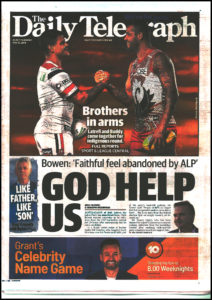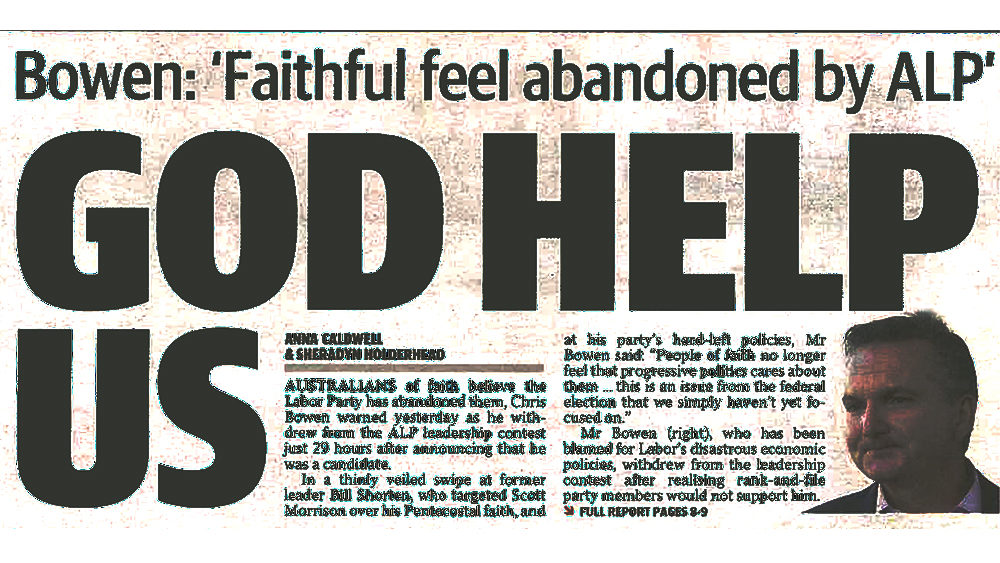Several times a week, my family journeys through the “smashed avocado” wall. Usually it’s because we leave our home in the chai latte zone in Sydney’s inner west and travel southwest to venues for my daughter’s disability sports club, based around untrendy (but full-of-heart) Bankstown.
During that long plebiscite campaign in 2017, you could pick, just about, when you left the rainbow flag territory and would find hijab-clad women as part of groups campaigning for a “No” vote.
My best estimate of the boundary was somewhere around Campsie. For the federal election that includes the Labor-held electorates such as Chris Bowen’s McMahon electorate (65 per cent No), Watson (70 per cent No), and (Blaxland 74 per cent No).
Senior political correspondent Aaron Patrick, dissecting election predictions that were wrong the Australian Financial Review, wrote: “the national media did not see a religious backlash occurring in Western Sydney where the Labor Party failed to win Reid and Lindsay, and may lose Macquarie. The three seats would have made the difference between minority and majority government.”
On the southern edge of Sydney’s “No zone” is the seat of Banks, which was a Labor “must win”. I know the community hall in Riverwood very well – it’s where my friends living with intellectual difficulty practise basketball. David Crowe, chief political correspondent of the Sydney Morning Herald, has it at the centre of a useful piece of micro analysis.
“The workers of Riverwood gave Bill Shorten a warm welcome one year ago when he spoke to a packed community hall about his plans to restore fairness in wages, health, education and tax,” Crowe writes.
“‘There is a problem in this country in that there’s two classes of workers,’ Shorten told his audience. He talked about increasing penalty rates, helping casual workers and raising more tax revenue to fund his spending plans.
Liberals’ David Coleman was poised to lose, with a margin of just 1.4 per cent. He gained a swing of 5.7 per cent instead.
“The applause was loud and long that night at the Riverwood Community Centre in the southern suburbs of Sydney. By the time the meeting ended, Shorten had good reason to think he could win this community, one of the poorest parts of the marginal electorate of Banks.”
(All I remember is that Shorten made it hard to park that night.)
Last Saturday, the Liberals’ David Coleman was poised to lose, with a margin of just 1.4 per cent. He gained a swing of 5.7 per cent instead.
Crowe’s digging into the numbers is devastating. “While the Liberal vote in the more comfortable suburb of Oatley barely changed, it surged in Riverwood. Voters at St Andrew’s Church Hall, in Riverwood South, swung to the Liberals by 8.9 per cent. They swung by 11.4 per cent at Riverwood Public School and 11.8 per cent at the Hannans Road Public School in Riverwood East.
“Shorten fought the election on fairness and failed. He won over the crowd who turned up to the local hall but could not win the wider community. Voters spurned what he offered. His idea of fairness fell flat.”

News Corp appears to have discovered the potency of the religious vote AFTER the election. “GOD HELP US” was the cover headline in Thursday’s Daily Telegraph, giving an account of Labor leader Chris Bowen’s warning that people of faith feel the ALP has abandoned them. “People of faith no longer feel that progressive politics cares about them … this is an issue from the federal election we simply haven’t yet focused on.”
This “No” voting electorate, to the surprise of many, stayed with the Liberal member.
The reasons for the government win were primarily economic, according to an exit poll by JWS Research reported by Phillip Coorey in the Australian Financial Review. But the Bowen view that faith was a factor cannot be discounted.
The Plebiscite “No” territory marked a swing in mostly safe Labor territory. But the analysis of the electorate of Banks by Crowe – Coleman’s Nine/Fairfax colleague – is significant. This “No” voting electorate, to the surprise of many, stayed with the Liberal member.
Another key electorate is Chisholm, in Eastern Melbourne and centred on the Bible belt suburbs of Box Hill and Blackburn. It turned out to be the electorate that gave Morrison a majority. But it was a solid “Yes” voting area – 62 per cent voted for same-sex marriage. The Australian Christian Lobby targeted this seat and, with a margin of 1407 votes, it can claim to have had a part in the result.
There was a triumvirate of religious issues in this election – religious freedom, the controversy over rugby player Israel Folau and the hangover from the plebiscite. Australians are not used to religion playing a role in election.
At 65 per cent, McMahon recorded the third-highest “No” vote in the same-sex marriage plebiscite.
There will be two reactions (and some people might share a bit of both – I hope so). More progressive Christians will continue to regard the election as one that should have been won on climate change. They are likely to see this response as a Murdoch beat-up.
But many others will agree with Bowen’s description of religious people having been disenfranchised in the ALP’s campaign. They will simply wish this sort of headline had been seen during the election campaign.
This years poll has already been branded “The Miracle Election” by that very clever marketing man, PM Scott Morrison. But for this writer it will be always be the election where the Smashed Avocado wall became real.
Feedback
Here’s a test: Please use the Eternity Facebook page to comment on this story, while not sledging the people who voted differently from you!



